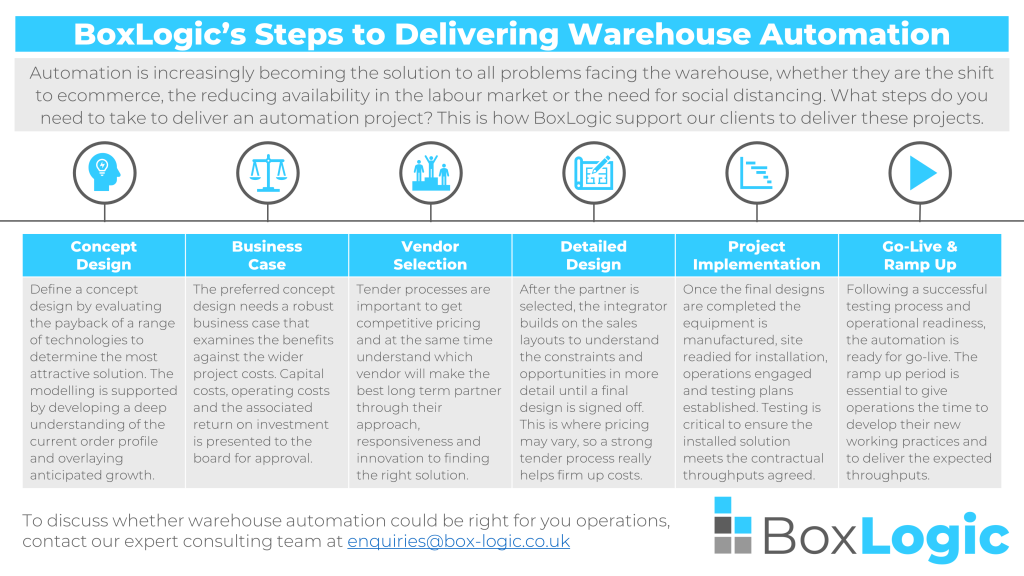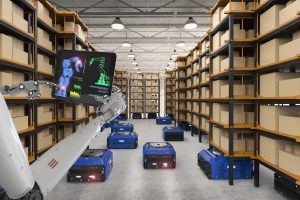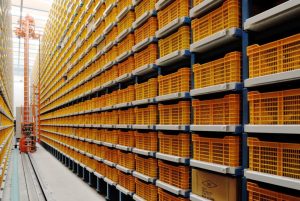The supply chain has taken centre stage in recent years, even before the Covid-19 pandemic. The rise in ecommerce has placed greater stress on the warehouse operation as steady, bulky order profiles become more fragmented and unpredictable, increasing operating costs.
Warehouse automation and robotics is seen as a silver bullet to overcome the modern challenges of ecommerce, reducing labour availability, and increasing costs. It does have the potential to transform the logistics function, drive efficiency, improve service and more.
But automation projects also carry risk. Pitfalls include acquiring an inappropriate solution or technology, building to the wrong size, not having the flexibility to adapt to a changing order profile, not capturing the true project costs in the business case, inadequate testing, not managing the cultural change in the operation or ramping up too quickly after go-live.
That is why BoxLogic recommend enlisting the help of experts to support organisations through the process. This article outlines the major steps of an automation project and where our interventions can help deliver successful outcomes to projects.
Step By Step Overview

Concept Design
Objective - determine the most attractive solution based on feasibility and financial return
Some start an automation project by immediately engaging automation providers, but this can lead to a concept solution being produced without a full evaluation of the potential solutions on the market.
A BoxLogic led approach starts with a relatively intensive data analysis and modelling process to consider a fuller range of market solutions. This baselines the current peak and average throughput, stock, and order profiles of an operation before overlaying growth and any changes in the shape of the business.
This is distilled into a ‘material flow’, indicating the average and peak hour throughput of each process step of the operation for the design horizon, normally ten years into the future. This is a key input to the solution evaluation.
A range of feasible automated, mechanised, and manual options are agreed with the client based on our extensive experience in warehouse automation projects. Our consultants then size and produce budget costs for each solution and evaluate the payback against the current solution to identify the most attractive option.
Once a preferred solution has been agreed, an end-to-end concept is developed with CAD layouts and budget equipment schedules produced. This will be used as a key input to the business case.
Business Case
Objective – detail financial assessment and present to board for investment approval
A robust business case is integral to assessing the wider costs and benefits to the organisation of warehouse automation.
Different businesses have different approaches to securing board approval, so our team typically take on a supporting role through the business case, assisting the financial lead by providing key outputs from our modelling. Leveraging our considerable experience in the area, we challenge where appropriate, so that realistic assumptions are used on savings and expected paybacks.
Warehouse automation investments are usually in the tens of millions and it is important that the full range of costs are considered at this stage as surprises down the road not only lead to reductions in scope and potentially reduced benefits but they also undermine the entire project, making it harder to get sign-off on future phases.
Vendor Selection
Objective – identify the preferred solution provider based on solution, approach and pricing
There are several benefits to establishing the concept solution of any warehouse automation investment prior to engaging the supply base.
The business case has already been signed off – this is a big selling point to suppliers which, due to rapid growth in the sector, companies are ever more stretched and selective in the projects they bids for. An RFQ with a business case signed off is a clear indication that you are serious, and you have done your homework. This can lead to higher levels commitment from vendors as they can be confident that a return on investment is achievable.
Another benefit is that each of the vendors is quoting for the same concept solution, so you can better evaluate comparable proposals. We recognise that vendors may have more experience in building solutions, so it is good to encourage a degree of innovation when quoting on the concept design.
Our team’s experience of tendering equipment and automation solutions has been refined over a decade, resulting in a tried and tested approach to ensure value is provided to our clients. This starts by producing a quality tender pack that not only supports the integrators’ understanding of the project but can also form the basis of the contract to be signed upon award to the preferred supplier.
Further value is delivered through the evaluation and scoring of the vendors, where proposal costs are compared against both the original budget and other vendors to better understand the structure of the commercials and where there are opportunities for negotiation amendments to the design can offer cost reductions.
We work closely with clients to create a balanced scorecard in which the full proposition of each vendor can be compared. This will include tangibles such as equipment, software, project and maintenance costs in addition to the intangibles that include relationship, quality of references and confidence in delivery.
Time should be set aside for the key decision makers to attend vendor presentations of their proposals as well as reference site visits. It is important to involve a wide array of stakeholders in the decision making and review process including operations, IT, and engineering to probe how the system will work.
Detailed Design
Objective – refine solution design, implementation plan, phasing and pricing
The detailed design phase is where the design moves into the next level of detail to transform a sales layout into one ready for manufacture. The refined layouts will take account of certain elements which may not be factored in during the tender phase, such as exact building column spacings, power and data connectivity, etc. This usually results in minor adjustments to pricing.
The IT solution is now a major part of any automation solution. It is not just about moving products from one area to another but when, how and why it is done. The software solution provides this intelligence and further optimises the physical equipment. This is where the systemic processes that accompany the physical are determined and deciphering whether they should be manged by the Warehouse Management System (WMS) or the Warehouse Control System (WCS).
This is also where the detailed implementation plan and phasing of the project is defined, with the setting of clear milestones to deliver the project. Key resource for the project should be in place, even if it means extracting them from the operation and backfilling, with a view to these people eventually owning the live operation. Operational engagement is critical to the success of warehouse automation projects.
The preferred vendor will have been announced at the end of the previous stage but often, contractual negotiations continue alongside the detailed design. The customer may have a clear idea of which legal contract to use whilst the vendor will certainly have a preference. It’s all about being comfortable with how the risk of the project is shared between the two parties.
Project Implementation
Objective – deliver a timely installation and thoroughly tested solution to contractual rates
The implementation stage is where the project really starts to gain momentum and the future becomes real as the operations team is readied for the future and equipment physically installed.
Moving from a manual to an automated operation demands significant cultural change. Automation offers high throughputs with reduced headcounts however it reduces the operational flexibility. If volumes surge, you can no longer throw people at it.
The new operation must be prepared to proactively manage the volumes, and this sometimes requires different skillsets to what the operation previously held. This may require revised roles for operations staff or going out to the market to source the new skills required in crucial leadership positions.
Conducting a thorough testing process is also core to the implementation phase. Equipment and system throughput rates will have been specified in the tender phase and agreed during the contractual negotiations. These need to be met before operational go-live.
This sometimes involves creative solutions to test the equipment without any live product in the system but it is imperative that time and resource is devoted so that there is no pressure to sign off the install to keep up with the programme. Once signed off, the equipment becomes the user’s liability.
Go-Live & Ramp-Up
Objective – build operational capability and utilise equipment to deliver financial return
Go-live signals the start of a new chapter on the automation journey and that is certainly worthy of celebration, but the hard work is not over. The ramp-up period is almost an extension of the implementation phase.
It is important to ramp up volumes gradually and in line with a predetermined plan. This is the time for the operation to develop the new working practices and deliver the expected throughputs and productivities on a consistent basis. The continuous improvement mentality should continue long after the ramp up plan is complete.
Whilst it may be tempting to speed up the roll out when things are going well, it will only take one issue for momentum to be lost and potentially result in disappointed customers. Do not take on too much too early as negative headlines create longer lasting impressions than positive ones.
Whether the appropriate automation solution is goods-to-person, sortation, autonomous mobile robots or otherwise, then the BoxLogic approach helps to deliver successful project outcomes using our team’s vast experience at every stage.
To find out more, get in touch with one of our consultants today to discuss your project objectives and how BoxLogic can support your organisation to deliver the next generation for your logistics operation.

Find out more on our service pages:
- Warehouse Automation and Robotics
- Warehouse Design
- Warehouse Control Systems
- Business Case Support
- Project Management & Implementation



